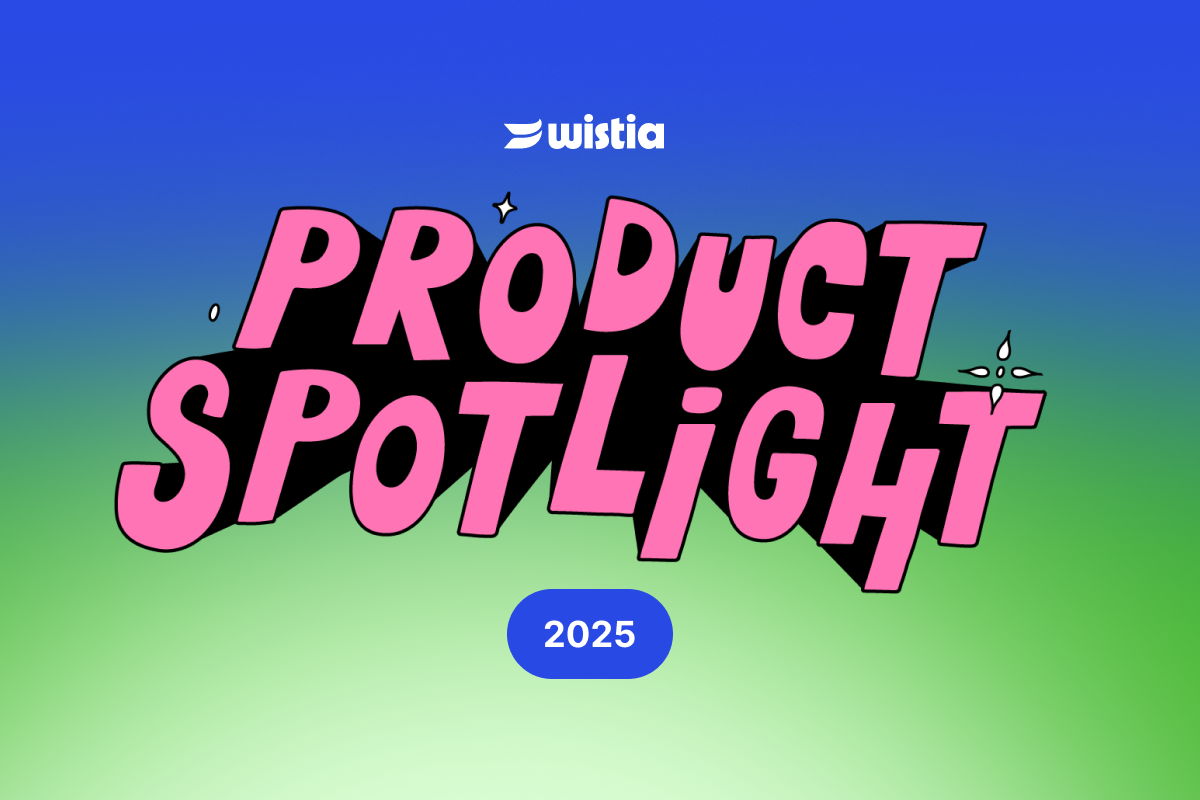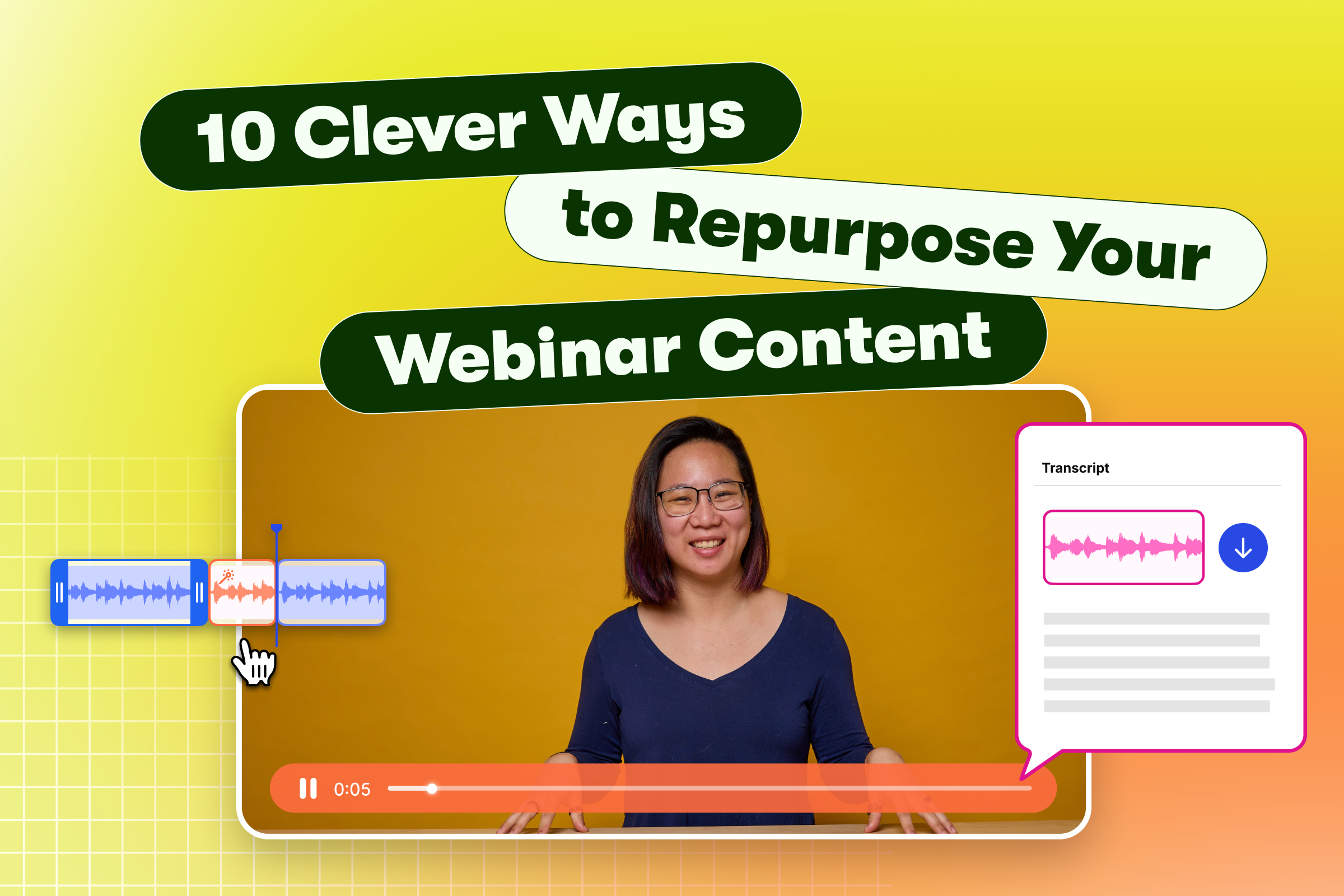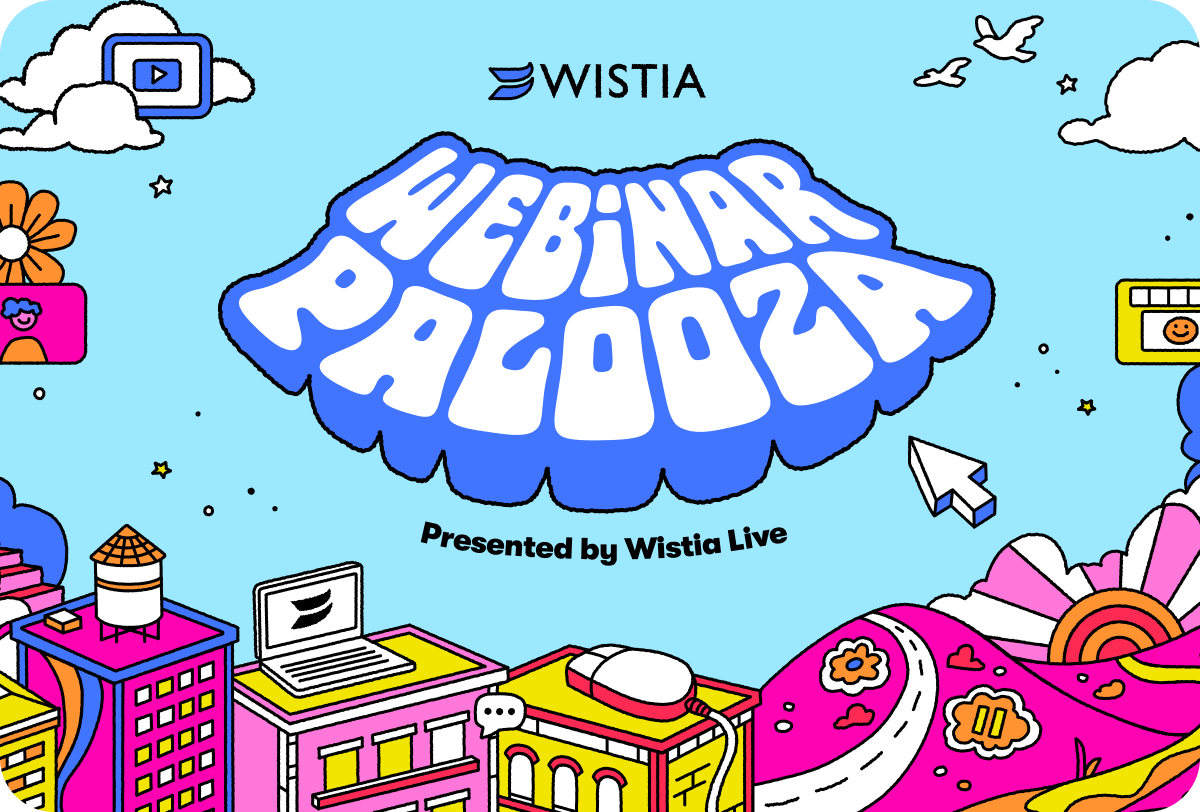5 Reasons Why Podcasting Should Be Part of Your Content Marketing Strategy
December 4, 2020
Topic tags
Podcasting is no longer just a fun hobby for creatives and people who love to talk — it’s evolved into one of the most popular content formats around. In fact, over 100 million Americans listened to podcasts each month for the first time ever in 2020.
As the demand for podcasts continues to grow, more and more businesses are starting to see the distinct advantages of launching a show. And marketers — particularly brand and content marketers — are taking note.
Why? Well, podcasts are content goldmines. They drive high levels of engagement, build loyal audiences, and are easy to repurpose into written or video assets. Podcasts can also work in unison with other types of content to build a stronger overall content marketing strategy for your business.
“Why? Well, podcasts are content goldmines. They drive high levels of engagement, build loyal audiences, and are easy to repurpose into written or video assets.”
This is precisely why we’re firm believers that podcasting is an essential element of a well-rounded content marketing strategy. Instead of siloing your audio content and treating it as a separate entity from other, more traditional content (i.e., blog posts), we feel that all content produced by your brand should work towards a similar set of shared goals.
In this post, we’ll explore why podcasting deserves a spot in your 2021 content marketing plan and break down a real example of how we leverage podcasting at Wistia. Let’s dive in!
1. Podcasts offer a low barrier to entry
Back in the Golden Age of Radio, you needed expensive equipment and a state-of-the-art studio to compete with the best radio broadcasters in the biz. Lucky for us, times have changed.
Podcasts are one of the lowest-lift ways to create new content, which is just one of the reasons why it’s such a natural fit for your content marketing strategy. All you need is a solid microphone and reliable recording software to get started. Sure, you can still invest in expensive equipment and a state-of-the-art studio, but what’s the rush? If you’re new to podcasting, think baby steps.
Start by purchasing a microphone of respectable quality. The Blue Snowball and Yeti are both excellent, easy-to-use options for newcomers at $70 and $130, respectively. If you’re strapped for cash, you can even use most standard smartphone voice recorders to get the job done.
The next thing you’ll need is recording software. GarageBand is a popular and user-friendly option for many first-time podcasters, and it comes standard on Mac computers. If you don’t have a Mac, Audacity is a great alternative. Both programs are free, which makes them ideal for budget-conscious podcasting beginners.
Once you’ve got your microphone and software, it’s time to tackle some of the creative decisions around your show. What’s the best format for your podcast, how long will episodes be, and how often will you release new content? Once you’ve nailed down the vision for your show, you’re off to the races.
From a distribution perspective, your podcast hosting platform should be able to handle the details of distributing your episodes to various streaming platforms, like Apple Podcasts, Spotify, Stitcher, and more (which means less work for you!). Easy peasy!
Overhead costs and time commitments are generally pretty low when you start a podcast, but there’s plenty of room to grow. If there’s more demand from your audience, it’s easy enough to record several podcasts in one day and schedule them to be uploaded in the weeks ahead. Podcasts are inexpensive to create and scale well, a win-win for your content team.
“Podcasts are inexpensive to create and scale well, a win-win for your content team.”
2. Audio content is easy to consume
Most types of content, like videos and blog posts, require your undivided attention. But with podcasts, you can listen to an episode, quite literally, anywhere — work, home, gym, you name it.
As the number-one vehicle for podcast consumption, smartphones make this on-the-go listening possible. With mobile consumption at an all-time high worldwide, mobile-friendly content experiences are becoming increasingly essential, and podcasts already lead the charge in that respect.
“With mobile consumption at an all-time high worldwide, mobile-friendly content experiences are becoming increasingly essential, and podcasts already lead the charge in that respect.”
Commuters love podcasts, with nearly 80% of listeners tuning in to their favorite podcast while traveling to and from work. Though COVID-19 has slowed down the number of regular commuters (for now), people also consume podcasts at home. About 69% of people listen to podcasts while doing housework, which likely now encompasses working from home as well.
The sheer freedom listeners have to consume podcasts wherever and whenever they want is unrivaled by any other form of content available today. People can multitask while listening to a podcast, which ultimately increases engagement. Your audience is happy to commit to an episode, knowing they can do the dishes or ride the subway while doing so.
3. Podcasts drive regular engagement
Podcast engagement is exceptionally high compared to other content mediums — and we’re not just talking downloads. Let’s start with the basics.
Americans who consume podcasts weekly listen to over six hours of content each week. Podcast listeners also subscribe to an average of six different podcasts. And when you subscribe to a podcast, you typically get notified when a new episode goes live. Fresh content delivered right to your subscribers regularly means more engagement opportunities and more chances to promote episodes that may attract new audiences on social media.
Beyond that, folks are sticking around to listen. A whopping 88% of listeners listen to an episode to completion. Pacific Content, an agency that specializes in podcast production, measures similar engagement-based metrics for shows they produce. Their clients average 90%+ episode completion rates for shows like Dell Technologies’ Trailblazers with Walter Isaacson and Schwab’s Choiceology. How’s that for engagement?
A key part of why podcasts are so engaging also ties back to their format. A lot of podcasts are simply conversations. A lengthy blog post might require intense focus to read (and retain), especially if the topic or language is dense. Listening to a podcast conversation is second nature — we’re a part of and listen to conversations every single day.
Last but not least, the repeatable format of a podcast gives you the opportunity to do something that’s pretty challenging but highly valuable for businesses, and that’s building relationships. Think about some of the podcasts you currently listen to — doesn’t it “feel” like you know the host of the show? Despite never meeting your favorite show’s host, the repeatable format and opportunity to inject some personality into your podcast allows you to engage and build deeper connections with your audience.
4. Podcasts build brand affinity
Achieving brand affinity starts with an engaged audience. As we mentioned above, a whopping 88% of listeners listen all the way through an episode (a stat worth repeating). When a listener is truly engaged and loyal to a podcast, they often become its biggest champions.
Just like Netflix shows are incredibly captivating, podcasts also have a binge-worthy quality. People get excited about a new podcast episode coming out, and 79% of podcast listeners will listen to a new episode immediately after it’s released.
If you’re looking for an example of a podcast with genuine brand affinity, look no further than Serial. With binge-worthy episodes that listeners regularly share on social media, the true-crime podcast jumped to 10 million downloads in just seven weeks when it first launched — a podcast record back in 2014. The podcast became a viral phenomenon in large part due to people spreading the word about how compelling the episodes were on social media.
And this success isn’t limited to media companies. Even “boring” industries can emulate this success with storytelling. Consider Command Line Heroes, an award-winning podcast from Red Hat Software. The show explores the open-source heroes transforming the world of tech from the command line up. Aside from being a generally entertaining and delightful listen, the show has had a surprising impact on Red Hat’s bottom line. To date, the podcast has:
- 2,000,000+ total downloads
- 644,000+ unique listeners
- Downloads in over 200 countries
- A 90% average episode completion rate
- An average time spent listening of 23 minutes
In addition to these performance indicators, Red Hat also keeps tabs on the marketing metrics that measure more important things than just content performance — namely, brand identification and brand affinity.
“A big benefit for Red Hat, beyond the fact that there’s a lot of people listening to the show for a long period of time, is that 96% of listeners identify Red Hat as the creator of Command Line Heroes. The show is very lightly branded, so our jaws dropped when we found that out because we don’t talk about Red Hat much at all, which was a big risk for us. That was a huge metric to show management — it proves that our brand is actually breaking through.”
“A big benefit for Red Hat, beyond the fact that there’s a lot of people listening to the show for a long period of time, is that 96% of listeners identify Red Hat as the creator of Command Line Heroes.”
5. Podcasts fuel content creation
Podcasts work in tandem with written and video content to create a unified content front that engages a greater portion of your overall audience.
Think of it as a two-way street. Specific podcast episodes can inspire new blog posts and video content ideas, and you can use podcast transcripts and quotes to create new articles, videos, infographics, and more.
On the flip side, other types of content can provide the basis for podcast episodes. Find a podcast episode topic from your existing content, such as a blog post. You can explore the post at an in-depth level with a full podcast conversation and even ask the writer to appear as a guest.
Let’s take a look at Wistia’s own original series, Brandwagon. We took the content marketing trifecta approach to promote the show with video, audio, and written content. First, we recorded and edited the video show for our short-format interviews. Then, we repurposed the extended, uncut audio content for The Brandwagon Podcast Interviews. Finally, we created robust episode recaps and shared lessons learned with Brandwagon blog content.
Here’s how a single episode looks in different formats:
To date, these individual pieces of content have gathered over 80,000 interactions — including pageviews, video views, and downloads. That’s over 80,000 engagements with our brand! Here’s the breakdown:
Video Stats
- Over 55,500 video views
- An average play rate of ~70%
- An average engagement rate of ~30%
Audio Stats
- Over 6,000 downloads (5,000 unique downloads)
- Average engagement rate of ~68%
Blog Stats
- Over 20,000 pageviews
- An average time on page of 3:36
The podcast was a vital component of this promotion because it unleashed the power of passive consumption. The video show and blogs are both entertaining and valuable, but they also require a certain amount of energy and attention to consume. The podcast extended our reach even further and helped us grow our audience in a way that written or video content simply couldn’t. And, the podcasts had really impressive engagement rates with listeners completing almost 70% of each episode in aggregate.
Whether you’re launching a net new show or looking to repurpose existing content, consider how different formats and mediums can complement each other. What works best for video versus audio? How can an audio episode be repurposed into a blog or social media content? This will help you connect the dots for promotion and ladder these pieces up into your broader content marketing strategy.
Introduce podcasts into your content marketing strategy
Content marketing isn’t just about producing blog posts anymore. A robust content marketing strategy should include various mediums to engage your audience and build brand affinity. People are consuming more audio content than ever before, and now is the time to embrace this shift to meet your audience wherever they are.






